
Making a table in Microsoft Word can be tricky, but with just a few simple steps, creating and customizing one for your needs is easy. In this article, we’ll teach you how to make a table in Microsoft Word and customize it perfectly.
Tables are a handy tool for organizing data, making data calculations using formulas, displaying information in an eye-catching way, or even creating visually appealing charts and diagrams to help break up long paragraphs of content.
Table of Contents
There are seven ways to import a table into an MS Word document. You can create them from scratch by drawing, inserting a graphic grid, using the insert function, adding a new Microsoft Excel spreadsheet table, inserting an existing Excel Spreadsheet table, using Quick Tables, or converting the existing text into a table.
No matter which option you choose, you’ll have to first open your Word document, find a spot where you want to insert the table, and click your cursor on that spot. Let’s use the above-mentioned methods to create a table in Microsoft Word.
This is one of the simplest ways of creating a Microsoft Word table. Follow these simple steps:

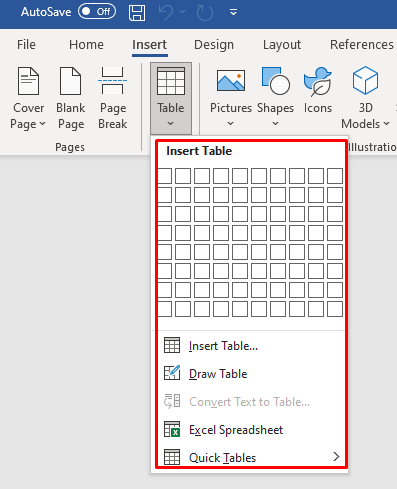
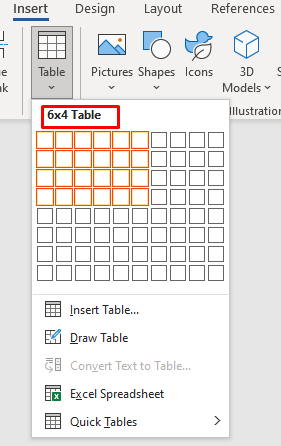
Once there’s a table in your document, you’ll notice two new tabs on the ribbon: Table Design and Layout . You can use these tabs to modify and stylize your newly created table. More on that later.
Using the insert function is as easy as selecting your table layout from the grid. Here’s how it works:
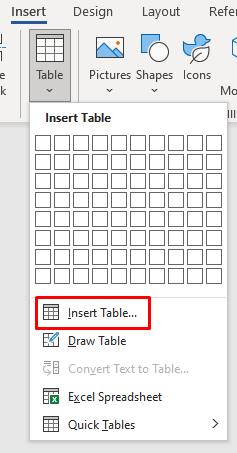
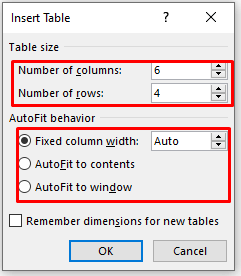
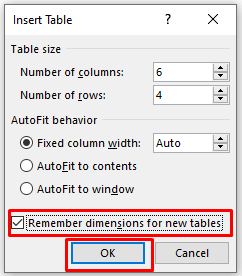
You can manually draw a basic table in Word. Here’s how:
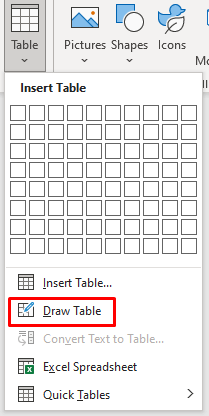


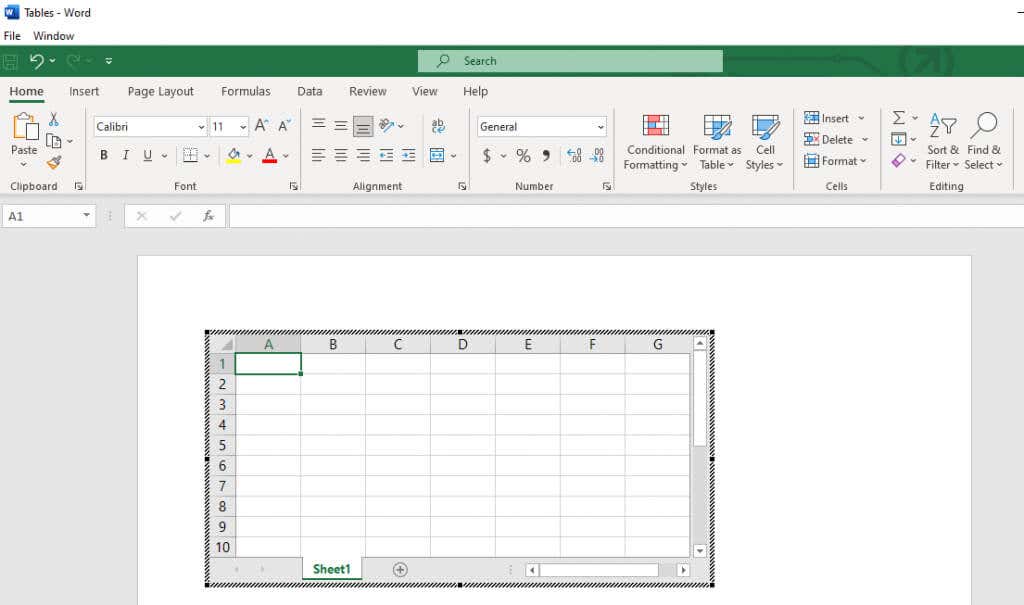
If you have prepared data in an Excel spreadsheet but need to move it to your Word document, you can simply copy and paste it.
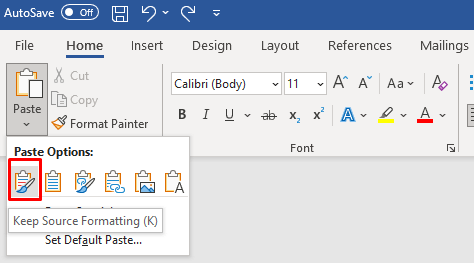
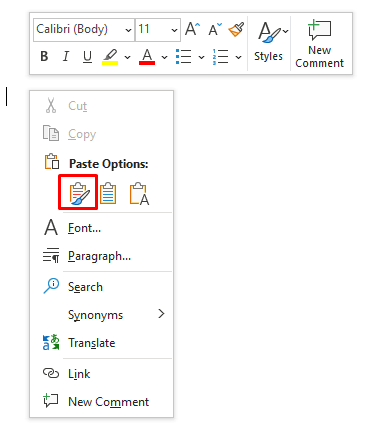
If you don’t want to customize your tables, choose one of Word’s templates from the Quick Tables menu. You can also create your own design and save it in the Quick Tables Gallery for later use.
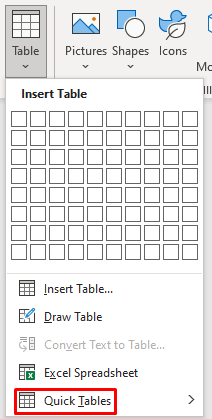
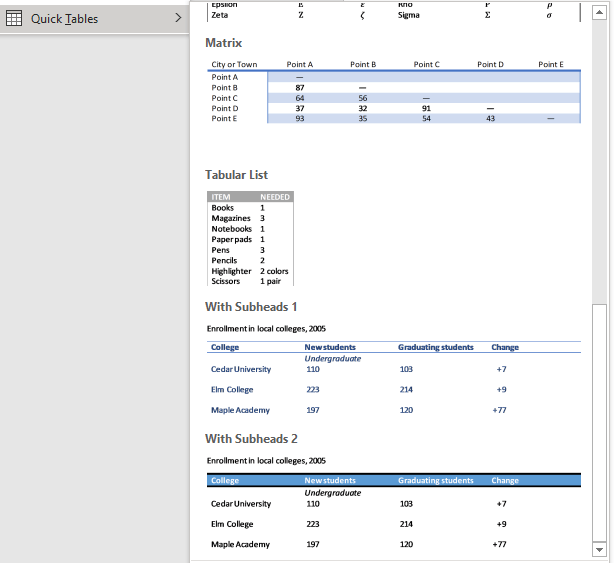
Converting text to a table used to be messy in Word. The data in a table would end up misplaced. That’s because previously, we had to use tabs to separate the data in individual cells.
Microsoft improved this feature, and now you can separate the table fields with commas, paragraphs, or any other separation characters. Let’s see how to convert a simple grocery shopping list into a table.
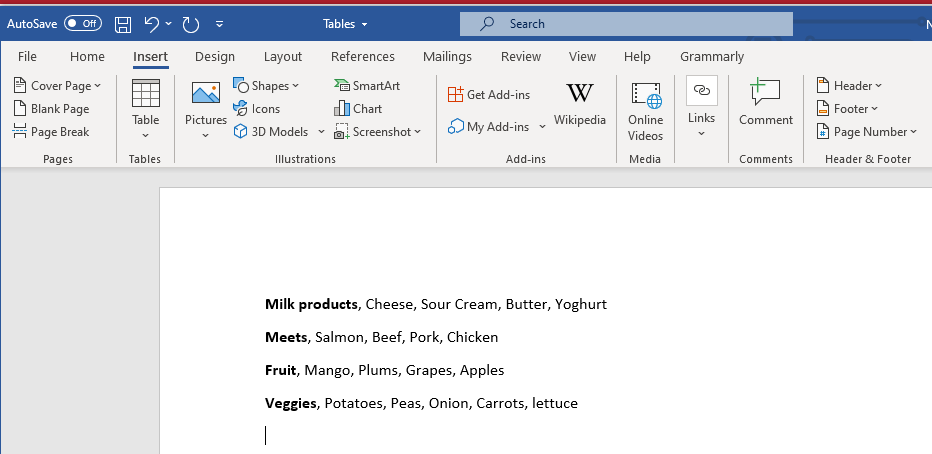
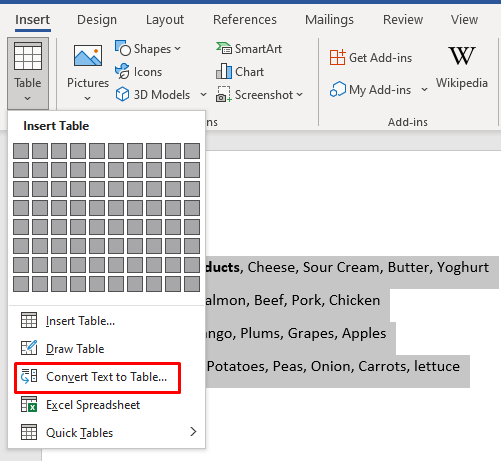
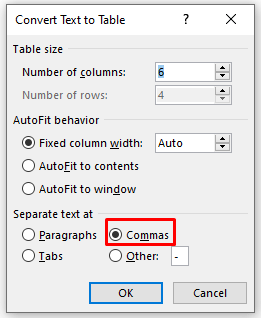
Table Design and Layout tabs are filled with helpful table tools you can use to format tables. Use Table Design to stylize your table and change its looks. Here you’ll find tools for shading, painting borders, and setting their thickness, style, and color. You can also select one of the many offered table styles.

In the Layout tab, you’ll find tools to add or remove cells, rows, and columns, merge cells, split them, or split the whole table into several ones. You’ll also use this tab to set other table properties, such as the table’s dimensions, or to align the text.

However, there are quicker ways to achieve anything these tools allow you to do. Let’s see how to quickly resize, align, add, or remove columns, rows, cells, and much more in Word tables.
Resizing the table manually means you can adjust its size or modify rows and columns individually. It’s as easy as dragging and dropping.
You’ll have to grab and drag to make the entire table larger or smaller.

Adjusting only the column or a row is just as easy.

You can align your table to the left, center, or right to best fit your Word document. This is especially useful if you resize the table to fit text around it. Here’s how:
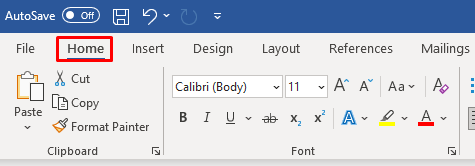

If your table has too few or too many rows and columns, you can easily fix it.
Adding a single column or a row is simple:
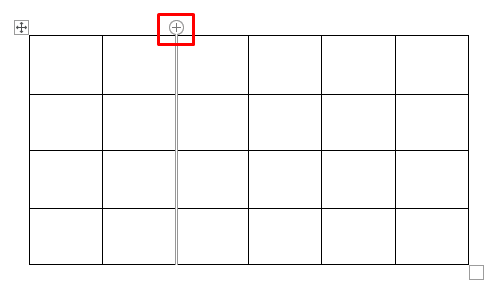
If you want to insert multiple rows and columns:
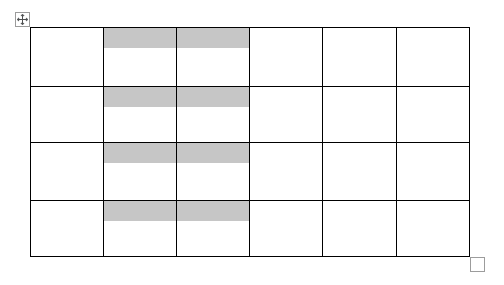

To delete rows or columns, select them, right-click, and select Delete Columns (or rows).
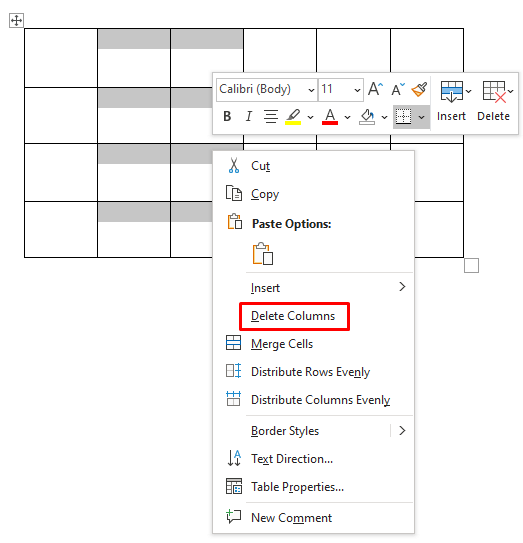
Table borders and shading are crucial to making your table look professional. With these simple tools, you can make your table stand out and make it easier to read. You’ll find both tools in the Table Design tab.
Go to the Table Design tab and:

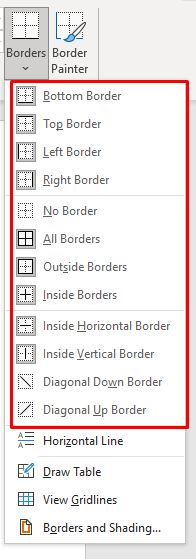
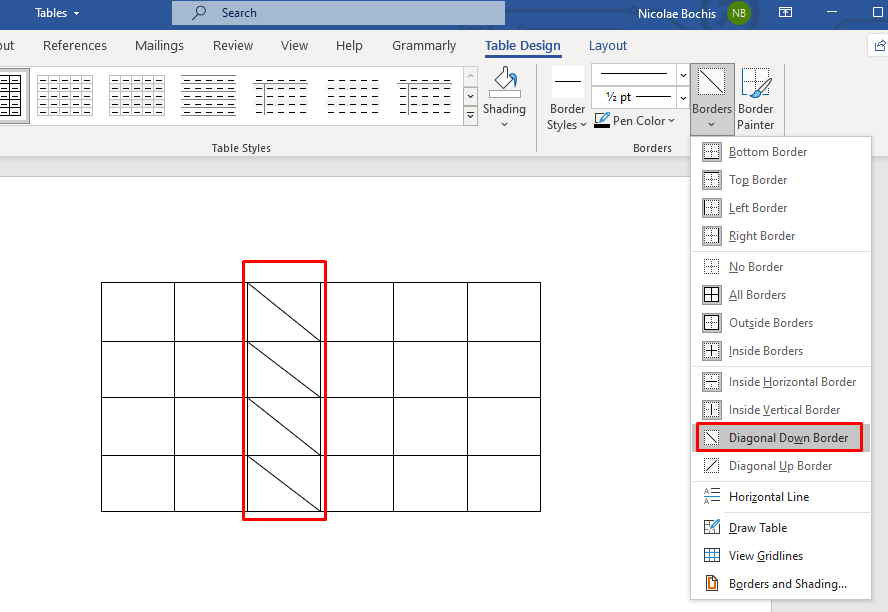
Spice things up by adding a background color to your tables. Use the shading drop-down menu to choose a color with which you’ll shade your table. You’ll find it in the Table Design tab.

If you want to shade a specific row, column, or cell, first select it and then choose the color. You can also shade only the selected cells.
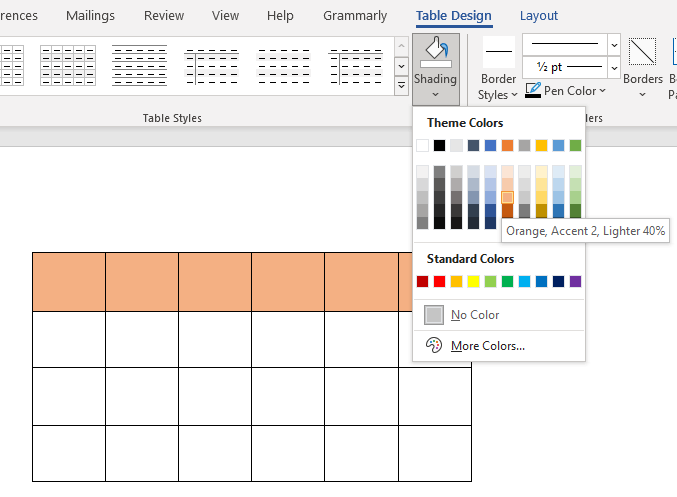
Microsoft Word has many table styles to offer, and you can choose one to make your table look professional. You can also do this to skip adding border style and shading.

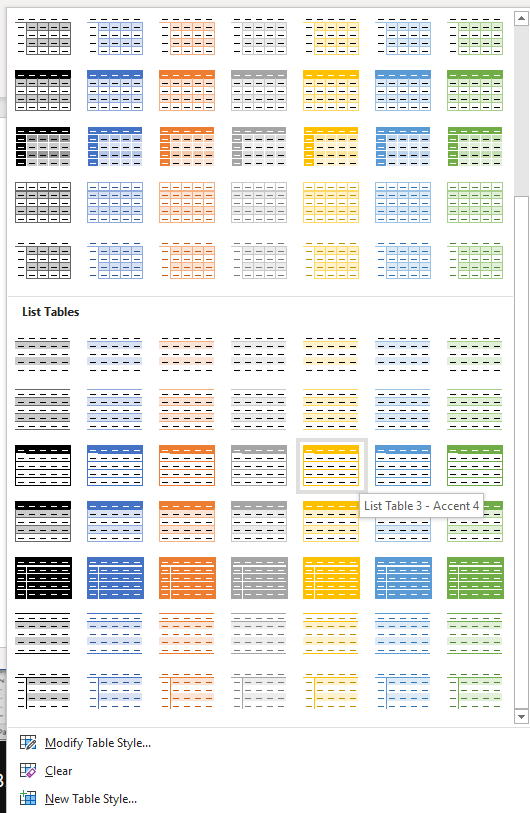
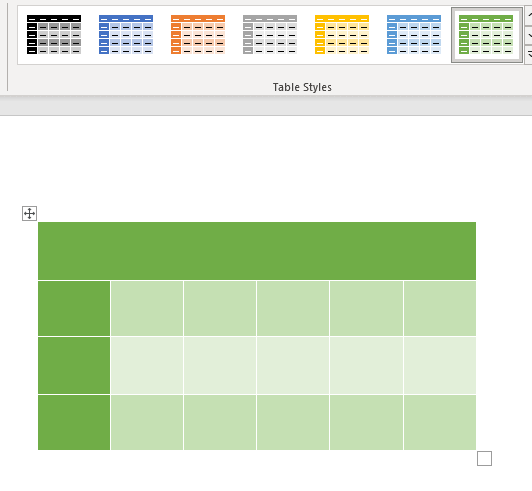
To adjust the premade table style, go back to the Table Design tab and check or uncheck the boxes in the Table Style Options section. By doing this you can add or remove the Header Row, First Column, or Banded rows. There are more options so you can experiment with them and see how they influence your table design.

If you need to set a specific row height and a column width, you should use Table Properties. Here’s how:
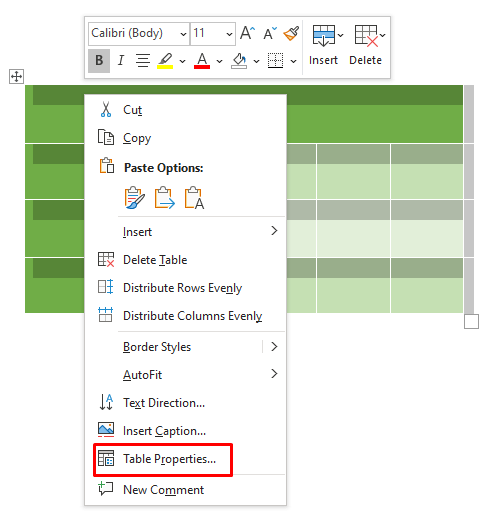 Word image 38" width="502" height="515" />
Word image 38" width="502" height="515" />
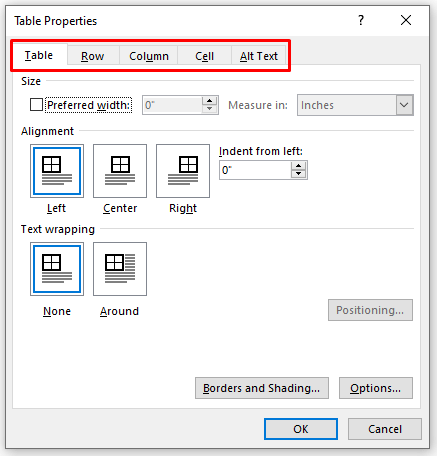
Word offers you a lot of tools, but creating and customizing tables is a quick and easy task. Not only can you use the pre-formatted table templates, but you can also easily customize your own table based on the needs of your project. Whether it’s adding new rows or columns for different parts of your data or varying the widths and heights of cells, you have all the tools you need to create a professional table. Let us know in the comments below if you have any questions!
Nicolae is a Jack of all trades technology writer with a focus on hardware, programming languages, and AI image-processing software. Over the last five years, he has ghostwritten numerous tech how-to guides and books on a variety of topics ranging from Linux to C# programming and game development. Nicolae loves everything that has to do with technology and his goal is to share his knowledge and experience with others. Read Nicolae's Full Bio